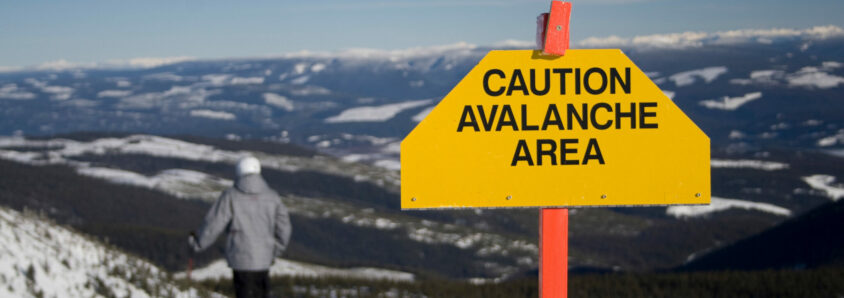As an insurance producer, you play a crucial role in ensuring that your clients in the avalanche control service sector are properly protected against potential liabilities. In this blog post, we delve into the world of avalanche control, exploring the latest techniques and strategies used in this high-stakes industry. If you have clients in the avalanche control services sector, Prime Insurance Company offers specialized coverage to help protect their operations. Share this blog post with them to provide valuable insights into the risks they face and the solutions available to mitigate them.
Understanding Avalanche Control
Avalanches are powerful and potentially devastating natural phenomena. Avalanche control focuses on minimizing the risks associated with avalanches through proactive measures. By understanding the unique characteristics of avalanches, professionals can implement strategies to assess, predict, and mitigate the potential for catastrophic events.
Techniques Used in Avalanche Control:
- Snowpack Analysis: Snowpack analysis involves studying the layers of snow, their stability, and potential weaknesses. This analysis helps experts estimate the likelihood of an avalanche occurring and its potential size.
- Control Techniques: Triggering Avalanches: Controlled detonations or artillery fire are used to trigger smaller, controlled avalanches in a controlled environment. This reduces the buildup of unstable snowpack, minimizing the risk of larger, uncontrolled avalanches.
- Snow Fencing: Fences strategically placed on mountain slopes help trap snow and encourage the formation of stable snowpack. This reduces the risk of avalanches by preventing loose snow from accumulating.
- Remote Sensing Technologies: Advanced technologies like remote sensing, including LiDAR and aerial surveys, provide critical data on snow depth, density, and other key variables. This data helps experts make informed decisions on avalanche control efforts.
- Human Observation: Experienced professionals with in-depth knowledge of the local terrain and weather patterns play a crucial role in observing on-site conditions and identifying potential avalanche risks. Their expertise is essential in making informed decisions for risk mitigation.
Safety First: Prioritizing Risk Management in Avalanche Control
Avalanche control is not just about managing snow; it is about ensuring the safety of lives and property in snow-prone regions. Here are some key principles to keep in mind when it comes to risk management in avalanche control:
- Plan and Preparedness: A thorough understanding of the terrain, weather patterns, and snowpack characteristics is crucial for effective risk management. By investing time in comprehensive planning and preparedness measures, professionals can anticipate potential risks and implement appropriate control strategies.
- Communication and Training: Clear lines of communication between team members and relevant stakeholders are vital for safe and efficient avalanche control operations. Ongoing training ensures that professionals are equipped with the necessary skills and knowledge to mitigate risks effectively.
- Regular Monitoring: Continual monitoring of snowpack conditions and weather changes is essential to detect any signs of avalanche risk. By utilizing advanced technologies and relying on human observation, professionals can quickly identify potential dangers and take timely action.
- Collaborative Approach: Avalanche control often requires collaboration between various entities, such as government agencies, ski resort operators, and local communities. By fostering strong partnerships, sharing information, and coordinating efforts, professionals can enhance their collective ability to manage avalanche risks effectively.
Effective Communication and Collaboration
Avalanche control is a complex and multi-faceted endeavor that requires effective communication and collaboration among various stakeholders. Here are some key factors to consider:
- Clear Communication Channels: Establishing clear lines of communication between team members, stakeholders, and relevant authorities is crucial for effective avalanche control. This ensures timely exchange of information, rapid response to changing conditions, and effective coordination during emergency situations.
- Collaboration with Local Communities: Local communities play a vital role in avalanche control efforts, as they often reside in the vicinity of avalanche-prone areas. Engaging with these communities, listening to their concerns, and incorporating their local knowledge can greatly enhance the effectiveness of risk mitigation strategies.
- Sharing Information and Data: Information sharing is essential for effective avalanche control. By sharing relevant data, such as snowpack analysis, weather forecasts, and observation reports, professionals can make informed decisions. Collaborative platforms and networks can facilitate the exchange of information among relevant parties.
- Joint Training and Exercises: Regular joint training and exercises involving professionals from different sectors, such as mountain guides, ski patrol, and rescue teams, enhance coordination and promote a cohesive response during avalanche emergencies. These exercises simulate real-life scenarios and help identify areas for improvement.
- Engagement with Government Agencies: Collaboration with government agencies responsible for avalanche control and management is critical. By working in tandem with these agencies, professionals can access crucial resources, funding, and support necessary to implement effective risk mitigation strategies.
Having Liability Insurance for Avalanche Control Services:
It is essential for avalanche control service providers to have appropriate liability insurance coverage to protect themselves and their clients against unforeseen events. Prime Insurance Company offers comprehensive liability insurance designed specifically for specialty and unique risks like avalanche control services. By partnering with Prime Insurance Company, avalanche control service providers can have peace of mind knowing they have a reliable insurance partner when an incident, claim, or lawsuit occurs.
Key Takeaways: Techniques and Strategies for Avalanche Control and Risk Mitigation
In conclusion, staying updated with the latest techniques in avalanche control is essential for avalanche control service providers. By implementing the discussed strategies, service providers can enhance their capabilities, ensure safety, and minimize the risks associated with avalanches. We encourage insurance producers to share this blog with their clients to promote industry knowledge and foster better collaboration in the field of avalanche control. Together, we can make a difference in mitigating the unique risks faced by those providing avalanche control services. Remember, having the right insurance coverage, such as liability insurance from Prime Insurance Company, is vital for protecting against potential liabilities and ensuring peace of mind in the challenging field of avalanche control.
If you’d like to get a quote for your clients, head over to our Avalanche Control Insurance page.


